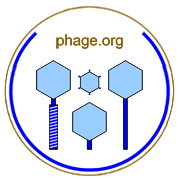

Phages for which host ranges substantially overlap, geographical ranges substantially overlap, and coinfection can lead to substantial homologous recombination or equivalent reassortment with high likelihood of viable outcomes.
Clearly two clonally related phages that occupy the same immediate environment should be considered to be part of the same population if in fact they are capable of recombining genetically given coinfection.
For two phages that are either not clonally related or otherwise display substantial sequence divergence, then assignment to the same population will be dependent on opportunity for successful recombination, that is, sexually producing viable progeny.
A concern arises to the extent that a given phage may be reasonably assigned to more than one population. That is, the concept of population, and particularly as applied to clonal organisms, possesses some ambiguity and as a consequence so does the concept of a phage population.
If phages should be incapable of genetic recombination, then their populations in general would be defined similarly to that of purely clonal organisms.
For more on this topic, see Wikipedia, Google, and PubMed. Contact web master. Return to terms.











